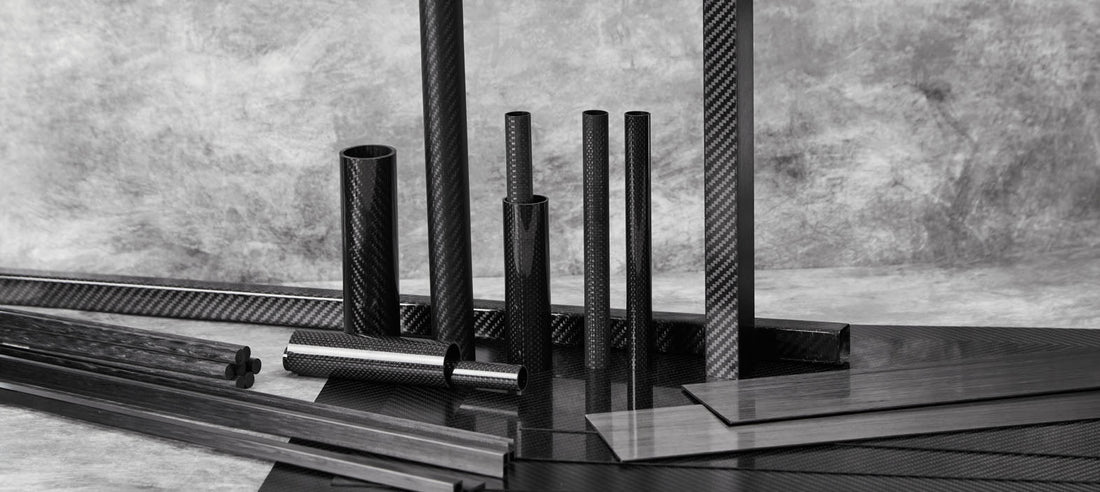
Not all carbon fiber is created equal: Building the first truly sustainable padel racket
Mikkel Kaae JacobsenShare
WHEN PEOPLE HEAR "CARBON FIBER," THEY THINK OF SPEED, STRENGTH, AND CUTTING-EDGE DESIGN. BUT THERE'S A TRUTH BEHIND THE MATERIAL MOST PLAYERS NEVER SEE — AND IT MATTERS IF WE'RE SERIOUS ABOUT BUILDING A SUSTAINABLE PADEL RACKET.
Carbon fiber isn't a single material. It's a composite: pure carbon fibers woven into a fabric, held together by a plastic resin. And the choice of that resin — the matrix — changes everything.
At the high-performance level, almost every padel racket today uses a thermoset resin — usually an epoxy. Once it's cured, it's permanent. It can't be melted down, reshaped, or easily repaired. It's strong, but brittle. Light, but final. And from a sustainability standpoint, it's a serious problem.
THE HIDDEN COST OF TRADITIONAL CARBON FIBER (AND WHY IT FAILS SUSTAINABILITY IN PADEL)
Producing carbon fiber is incredibly energy-intensive. Making 1 kg of carbon fiber can use 14 times more energy than making 1 kg of steel. Once it's manufactured, another problem surfaces: waste.
In traditional carbon fiber manufacturing, inefficiencies are the rule, not the exception. Especially in padel.
A recent study revealed that nearly 45% of high-cost carbon fiber is wasted during racket production, and over 40% of rackets fail internal or external quality checks. [We break it down fully here.]
And what happens to all that wasted material? In most cases, it ends up in landfills — unrecyclable and unrecovered.
That's before we even talk about what happens at end-of-life. A broken carbon racket made with traditional thermoset resin can't be recycled. It can't be reformed. It can only be dumped or burned. In a world pushing toward circular economies, that simply isn't good enough if we want to build a sustainable padel racket future.
THE NEW WAVE: THERMOPLASTIC CARBON COMPOSITES FOR SUSTAINABLE PADEL RACKETS
A better path is emerging.
Thermoplastic composites use carbon fibers, but suspend them in a plastic matrix that can be reheated, reshaped, and recycled. Instead of curing once and becoming permanent, thermoplastic carbon can flow again under the right conditions. This small chemical difference changes everything.
BENEFITS OF THERMOPLASTIC CARBON COMPOSITES:
Recyclability: Old rackets can be reprocessed into new forms instead of becoming waste.
Repairability: Cracks and damage can be healed with controlled heat.
Toughness: Thermoplastics absorb impacts better, meaning longer-lasting rackets.
Faster manufacturing: Parts can be made in minutes instead of hours, using less energy.
If we want to create a truly sustainable padel racket, we need to rethink the materials from the ground up.
WHY IT MATTERS FOR THE FUTURE OF PADEL
Today's players demand more — not just from their game, but from the brands they support. Performance matters. So does responsibility.
Traditional carbon fiber composites locked players and manufacturers into a one-way street: make, use, discard. But with next-generation thermoplastic composites, a circular future is possible. A future where rackets can perform at the highest level, survive the toughest matches, and still find a second life when their first one ends.
At Perma, we're building for that future.
Because the best performance isn't just about what you achieve today — it's about what you leave behind for tomorrow.
THE NEXT EVOLUTION OF CARBON FIBER IS HERE
Carbon fiber changed the game once. It's time to change it again — with the first generation of sustainable padel rackets.
Because not all carbon fiber is created equal.
